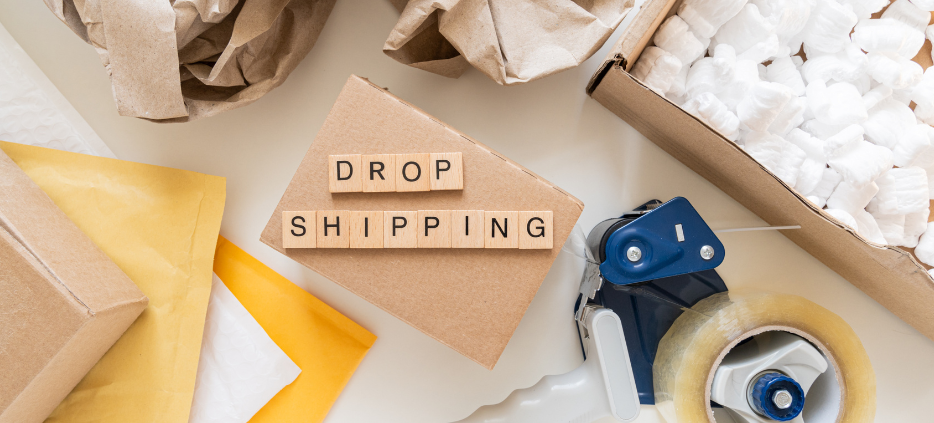
How to Dropship on Amazon: A Comprehensive Guide for E-commerce Entrepreneurs
Learning how to dropship on Amazon has become an increasingly popular business model for entrepreneurs looking to start an e-commerce venture with minimal upfront investment. Amazon’s vast customer base and robust infrastructure make it an attractive platform for dropshippers. In this comprehensive guide, we’ll walk you through the process of setting up and running a successful dropshipping business on Amazon, covering everything from getting started to optimizing your operations for long-term success.
Dropshipping on Amazon allows sellers to list and sell products without holding inventory, instead relying on suppliers to ship products directly to customers. This model offers several advantages, including low startup costs, reduced operational complexity, and the ability to test various products and markets with minimal risk.

Understanding Amazon’s Dropshipping Policy
Before diving into the specifics of how to dropship on Amazon, it’s crucial to understand Amazon’s policies regarding this business model:
- You must be the seller of record for your products
- You must identify yourself as the seller on all packing slips and other documentation
- You’re responsible for accepting and processing customer returns
- You must comply with all other Amazon seller terms and agreements
Violating these policies can result in account suspension or termination, so it’s essential to adhere to them strictly.
Steps to Start Dropshipping on Amazon
1. Set Up Your Amazon Seller Account
To begin dropshipping on Amazon, you’ll need to create a seller account:
- Go to Amazon Seller Central and click “Sign Up”
- Choose between Individual and Professional selling plans
- Provide necessary business information and documentation
- Complete the registration process
2. Find Reliable Suppliers
Identifying trustworthy suppliers is crucial for your dropshipping success:
- Research potential suppliers through directories or platforms
- Evaluate suppliers based on product quality, shipping times, and pricing
- Establish clear communication channels with chosen suppliers
- Ensure suppliers can comply with Amazon’s packaging and shipping requirements
3. Conduct Product Research
Selecting the right products is key to your dropshipping success on Amazon:
- Use Amazon’s Best Seller lists and third-party tools for market research
- Analyze competition and potential profit margins
- Look for products with good demand and reasonable competition
- Consider product size, weight, and potential shipping costs
4. List Your Products on Amazon
Create compelling product listings to attract customers:
- Write detailed, keyword-rich product titles and descriptions
- Use high-quality images that comply with Amazon’s image requirements
- Set competitive prices while ensuring profitability
- Include relevant product features and benefits
5. Manage Orders and Customer Service
Efficient order management and customer service are crucial:
- Set up a system to quickly forward orders to your supplier
- Monitor order status and shipping information
- Respond promptly to customer inquiries and concerns
- Handle returns and refunds according to Amazon’s policies
By following these steps and continuously refining your approach, you can establish a solid foundation for your Amazon dropshipping business.
Optimizing Your Amazon Dropshipping Business
To maximize your success in dropshipping on Amazon, consider implementing these strategies:
1. Focus on Product Quality and Customer Satisfaction
- Regularly check product quality by ordering samples
- Prioritize suppliers with consistent quality and reliable shipping
- Encourage positive customer reviews through excellent service
- Address negative feedback promptly and professionally
2. Optimize Your Product Listings
- Conduct keyword research to improve search visibility
- Use A+ Content (if eligible) to enhance your product descriptions
- Regularly update listings with new information and improved content
- Monitor competitor listings for insights and improvement ideas
3. Leverage Amazon’s Advertising Tools
- Utilize Sponsored Products ads to increase visibility for your listings
- Experiment with different ad types and targeting options
- Monitor ad performance and adjust campaigns for optimal ROI
- Consider using Amazon’s Demand Side Platform (DSP) for broader reach
4. Implement Efficient Inventory Management
- Use inventory management software to track supplier stock levels
- Set up alerts for low stock to avoid overselling
- Consider using multiple suppliers for popular products
- Regularly review and adjust your product mix based on performance
5. Stay Compliant with Amazon’s Policies
- Regularly review and adhere to Amazon’s seller policies
- Ensure all product information is accurate and up-to-date
- Maintain high performance metrics (e.g., order defect rate, late shipment rate)
- Keep detailed records of all transactions and communications
Challenges of Dropshipping on Amazon and How to Overcome Them
While dropshipping on Amazon can be profitable, it comes with its own set of challenges. Here’s how to address common issues:
1. Intense Competition
- Focus on niche products with less competition
- Differentiate your offerings through unique bundles or value-added services
- Prioritize excellent customer service to stand out
- Consider private labeling as a long-term strategy
2. Thin Profit Margins
- Carefully calculate all costs, including Amazon fees, before setting prices
- Look for suppliers offering competitive wholesale prices
- Optimize your operations to reduce overhead costs
- Focus on increasing sales volume to improve overall profitability
3. Limited Control Over Inventory and Shipping
- Build strong relationships with reliable suppliers
- Implement real-time inventory tracking systems
- Have backup suppliers for popular products
- Clearly communicate shipping times to customers
4. Customer Service Demands
- Develop efficient systems for handling customer inquiries
- Create detailed FAQs to address common questions
- Consider using customer service software or virtual assistants
- Be proactive in addressing potential issues before they escalate
Scaling Your Amazon Dropshipping Business
As your dropshipping business grows, consider these strategies for scaling:
1. Expand Your Product Range
- Gradually introduce new products based on market research
- Explore complementary product categories
- Consider developing your own private label products
2. Automate Your Operations
- Implement order management software to streamline processes
- Use repricing tools to stay competitive in the market
- Automate customer service responses for common queries
- Utilize data analytics tools for better decision-making
3. Explore Multi-Channel Selling
- Consider expanding to other Amazon marketplaces globally
- Explore selling on other platforms in addition to Amazon
- Develop your own e-commerce website to build brand identity
4. Invest in Marketing and Brand Building
- Develop a strong brand identity for your Amazon store
- Utilize social media marketing to drive external traffic to your listings
- Consider influencer partnerships to increase brand awareness
- Invest in content marketing to establish authority in your niche
Conclusion
Dropshipping on Amazon offers a unique opportunity to start an e-commerce business with relatively low risk and investment. By understanding Amazon’s policies, carefully selecting products and suppliers, and implementing effective strategies, you can build a successful dropshipping operation on the world’s largest e-commerce platform.
Remember that success in Amazon dropshipping requires dedication, continuous learning, and adaptation to changing market conditions and consumer preferences. Stay informed about Amazon’s policies, industry trends, and best practices to maintain a competitive edge. With the right approach and persistent effort, dropshipping on Amazon can be a lucrative and rewarding business venture.


